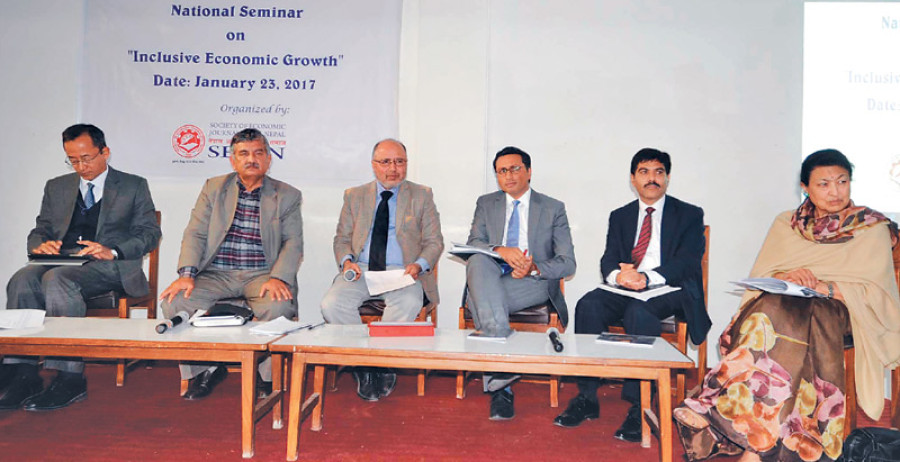Money
‘Constant growth needed to achieve inclusive economy’
Maintaining sustainable economic growth and increasing productivity is essential for achieving inclusive economic growth, experts said here on Monday.
Maintaining sustainable economic growth and increasing productivity is essential for achieving inclusive economic growth, experts said here on Monday.
Addressing an event organised by the Society of Economic Journalists-Nepal (Sejon), a majority of policymakers and economists stressed the need to maintain a firm base of the economy, achieve consistent and sustainable economic growth and expand infrastructure to attain inclusiveness in the economic sector.
According to National Planning Commission (NPC) member Swarnim Wagle, Nepal needs a consistently high economic growth rate and a wider sphere that can bind a wide section of the people.
“For this, we need to have a higher economic growth rate first. And once we succeed in keeping it constant, we can move ahead with social inclusion,” Wagle said. He added that the country had been trying to make the economic sector inclusive without maintaining a firm base which is why the economic sector has not been able to take off.
A concept paper entitled ‘Inclusive Economic Growth’ prepared by Sejon states that economic activities in Nepal are largely concentrated in Kathmandu and other major cities. The paper states that there is a huge gap in economic development and opportunities among the various geographic regions and across various communities of the country based on access to physical infrastructure and human capital.
“If we study the experience of the United States and Europe, we see that they first achieved economic growth. Achievements in areas like democracy, development and human rights evolved gradually,” former finance minister Surendra Pandey said. Pandey stressed the need to cultivate entrepreneurship to create dynamism in the economic sector.
Despite having abundant resources, Nepal hasn’t succeeded in achieving a high growth trajectory since the restoration of democracy in 1990. The concept paper states that the highest economic growth Nepal achieved in the last 26 years after the restoration of democracy is in the fiscal year 1993-94 when growth stood at 7.6 percent.
Aspects like uncertainty in policy implementation, inadequate supply of electricity, high transportation cost, challenging industrial relations and rigid labour regulations are the key constraints to economic growth.
According to gender and socio-economist Bina Pradhan, an economic policy focused only on the market economy has been largely responsible for thwarting inclusive economic growth. The contribution of Nepal’s formal sector to the economy stands at 32.75 percent while the informal sector contributes 31 percent, she added.
“Our economic policies have been framed only for the formal sector and the informal economy has been disregarded,” Pradhan said, adding that though women’s contribution to the country’s GDP came to 52 percent, it hadn’t been taken into account formally. Asian Development Bank (ADB) Country Director Kenichi Yokoyama stressed the need for infrastructure development and expansion and human capital growth to achieve inclusive economic growth.
According to him, despite having enormous scope and potential, Nepal is lagging behind in promoting infrastructure projects. Though there is some improvement in human capital, a lot needs to be done, he said.
“Transformation of economic policy too is a must. There is a need to shift gears from a low productive sector to a high productive sector,” Yokoyama said.




 7.12°C Kathmandu
7.12°C Kathmandu














